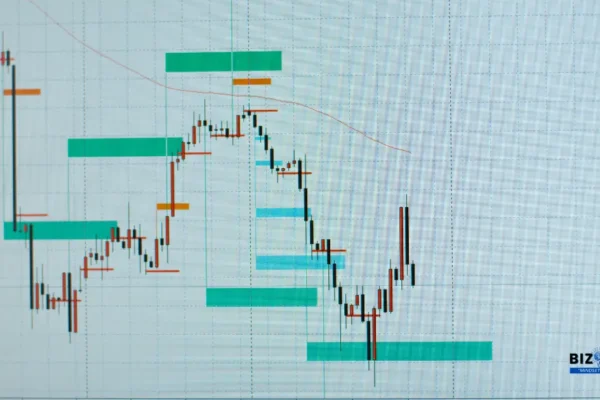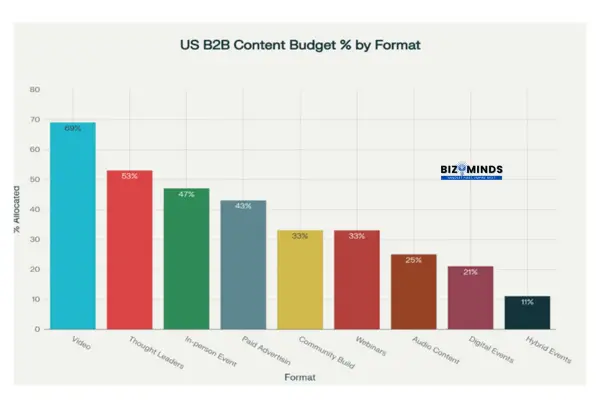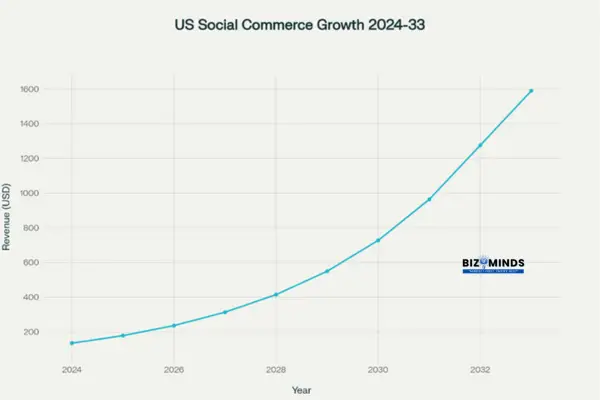

7 Digital Marketing Strategies US Companies Swear By
The American digital marketing has transformed dramatically, accelerating changes that would have taken decades into just a few short years. U.S. digital marketing spending reached $157.23 billion in 2024 and is projected to soar to $409 billion by 2034—a staggering 160% increase that reflects the urgent migration of marketing budgets from traditional channels to digital platforms. This isn’t just about numbers; it’s about a fundamental shift in how 273.49 million American online shoppers discover, evaluate, and purchase everything from morning coffee to dream vacations.
Picture this: It’s Monday morning, and Sarah from Denver is starting her week by scrolling through Instagram while sipping her coffee. She spots a story from her favorite fitness influencer showcasing workout gear that’s exactly what she’s been looking for. Within minutes, she’s made a purchase directly through the app—without ever leaving Instagram. This seamless journey from discovery to purchase represents the new reality of digital marketing in America, where 330 million people spend an average of 4 hours and 30 minutes daily on their phones, creating unprecedented opportunities for brands to connect, engage, and convert.
The pandemic didn’t just change shopping habits—it rewrote the entire playbook. E-commerce sales exploded from $569 billion in 2019 to over $1.19 trillion in 2024, with mobile commerce driving much of this growth as Americans embrace the convenience of shopping from anywhere, anytime. What makes this transformation even more remarkable is the human story behind it: 57% of Americans now consider themselves “mobile phone addicts”, checking their devices 144 times per day, creating micro-moments where brands have seconds to capture attention and build lasting relationships.
But here’s what truly sets successful American companies apart in this digital-first world: they’ve learned to balance cutting-edge technology with authentic human connection. They understand that behind every click, view, and purchase is a real person with genuine needs, emotions, and aspirations. The most effective digital marketing strategies don’t just leverage data and automation—they use these tools to create more meaningful, personalized experiences that resonate on a deeply human level.
Today’s American consumers are more empowered, informed, and demanding than ever before. Over 80% actively research brands on social media before purchasing, while 92% are eager to try AI-driven shopping features. They expect brands to meet them where they are, when they want, with content that feels personally relevant. This creates both tremendous opportunity and intense pressure for marketers who must navigate an increasingly complex ecosystem of platforms, technologies, and ever-changing consumer preferences.
The seven digital marketing tactics outlined in this article represent the essential playbook that America’s most successful companies use to thrive in this environment. From Fortune 500 giants to scrappy startups, these strategies have proven their worth across industries, driving measurable growth while building the kind of authentic brand relationships that turn customers into passionate advocates. Each tactic is backed by real-world examples, industry benchmarks, and the human insights that make the difference between digital marketing that merely reaches people and digital marketing that truly moves them.
1. Content Marketing with Thought Leadership: Digital Marketing
When Jessica Martinez, CMO of a fast-growing fintech startup in Austin, needed to establish credibility in a crowded market, she didn’t just create more content—she created content that mattered. Her team’s comprehensive guide to “Digital Banking Compliance in Post-COVID America” didn’t just attract 50,000 downloads in three months; it positioned her company as the go-to authority that enterprise clients trusted with their most critical decisions. This is the power of strategic content marketing: it transforms companies from vendors into trusted advisors.
The Numbers That Matter: The U.S. content marketing industry has exploded to a $600 billion valuation in 2024, driven by businesses discovering that quality content generates three times more leads than outbound marketing at 62% less cost. More telling? 79% of B2B buyers now rely on case studies and industry reports before engaging a salesperson, making content the new front door to your sales funnel.
Investment Trends Reshaping the Market:

US B2B Digital Marketing Investment Priorities 2024 (% of marketers increasing spend)
The data reveals where smart money is flowing: 69% of B2B marketers are increasing video investments, while 53% are doubling down on thought leadership content. This isn’t just trend-following—it’s strategic response to buyer behavior where 60% of customers consider purchasing after reading content about a product.
You can also read our comprehensive article on Content Marketing Strategy that has industry specific insights and methodology to upscale your marketing efforts.
Winning Digital Marketing Strategies from America’s Best:
Microsoft’s digital marketing method for building authority through deep-dive thought leadership is a prime example of strategic content expertise. Rather than surface-level blog posts, they publish comprehensive industry transformation guides that CIOs reference in board meetings. Their “Future of Work” series generated over $15 million in attributed pipeline while establishing Microsoft as the definitive voice in workplace technology evolution.
Multi-Channel Content Orchestration in Digital Marketing: Salesforce has perfected the art of content amplification, transforming single research studies into 20+ derivative pieces: executive summaries for C-suite readers, detailed whitepapers for technical teams, video series for social media, and interactive webinars for lead generation. This approach increased their content-driven lead quality by 340% while reducing cost-per-qualified-lead by 28%.
Industry-Specific Narrative Building in Digital Marketing: Palantir’s government division creates content that speaks directly to federal agency pain points, publishing detailed case studies on successful data integration projects. Their “Government Analytics Transformation” series positions them not as a software vendor, but as a strategic partner in national security—resulting in $2.3 billion in government contracts attributed to content influence.
Performance Benchmarks That Drive Results:
- Engagement Quality Over Quantity: Companies publishing fewer but more comprehensive articles see engagement rates rise by 83%
- Lead Conversion Impact: B2B companies using thought leadership content report 58% higher lead-to-customer conversion rates
- Revenue Attribution: The most successful B2B companies spend 40% of their digital marketing budget on content marketing, with top performers seeing direct revenue attribution of 58%
2. Data-Driven Paid Digital Marketing
Advertising used to be about buying a billboard and counting on the right people to see it—just like flip phones, those times are now history. Today’s American advertisers wield precision tools that would make a Swiss watchmaker envious, spending $202.59 billion on mobile advertising alone in 2024—a 14.4% year-over-year increase that reflects not just growth, but sophistication.
The Programmatic Revolution in Digital Marketing: 90% of all digital marketing display ads are now bought programmatically, with U.S. advertisers commanding 44% of global programmatic spend. This isn’t just automation—it’s intelligent, real-time decision-making that adjusts campaigns millisecond by millisecond based on user behavior, weather patterns, stock market fluctuations, and thousands of other data points.
AI-Driven Digital Marketing Campaign: The game-changer isn’t just programmatic buying—it’s AI-driven campaign optimization that makes real-time adjustments to ad placements, targeting, and spending based on live data and predictive insights. 83% of senior brand marketers now use AI to target digital marketing ads, moving beyond simple demographic targeting to behavioral prediction and intent forecasting.
Strategic Excellence in Action:
Dynamic Creative Optimization at Scale: Netflix’s approach to video advertising exemplifies next-generation programmatic strategy. Their AI analyzes individual viewing habits to create personalized movie trailers in real-time—a family-friendly version for parents browsing during school hours, a thriller version for late-night viewers. This dynamic personalization increased campaign engagement rates by 47% while reducing creative production costs by 23%.
Cross-Platform Attribution Mastery: Airbnb’s programmatic strategy tracks users across 14 different touchpoints—from initial Google search to Instagram story interaction to TikTok video view—building complete user journey maps. Their attribution modeling revealed that mobile video ads viewed on weekends had 3.2x higher conversion rates when followed by desktop display ads on Monday mornings. Thanks to this insight, their cost-per-acquisition decreased by 34%, and they saw an increase in bookings.
Predictive Budget Allocation: Uber’s advertising AI doesn’t just optimize current campaigns—it predicts demand spikes up to 72 hours in advance, automatically adjusting ad spend across different markets. During March Madness, their system detected increased ride demand near tournament venues and proactively increased advertising spend by 180% in those markets, resulting in $12 million additional revenue from surge pricing optimization.
Performance Metrics That Matter:
Search Advertising Leadership:
Search advertising leads mobile ad spend with $81.5 billion, delivering $2 in revenue for every $1 spent
Video Growth Trajectory:
Programmatic video will surpass $110 billion, with AI-driven personalization increasing ROI by up to 25%
Conversion Optimization:
Top-performing programmatic campaigns see conversion rates exceeding 8.25% when combining precise targeting with dynamic creative optimization
3. Digital Marketing: Omnichannel Social Media Engagement
Social media marketing has evolved far beyond posting pretty pictures and hoping for likes. It’s become the primary driver of $134.99 billion in U.S. social commerce revenue in 2024, with projections showing this exploding to $1.59 trillion by 2033—a staggering 32.4% compound annual growth rate that represents the fastest-growing segment of digital marketing commerce.
The Commerce Revolution: The transformation is profound: TikTok now has a higher percentage of U.S. buyers (43.8%) than any other platform, while social commerce comprises 18.5% of all online sales. This isn’t just social engagement—it’s a complete reimagining of the purchase journey where discovery, consideration, and conversion happen within a single app experience.

US Social Commerce Market Revenue Projection 2024-2033 (in billions USD)
Platform-Specific Performance Excellence: Digital Marketing
Facebook’s Enduring ROI Dominance: Despite newer platforms grabbing headlines, Facebook continues delivering exceptional results with $135 billion in ad revenue in 2024. The platform achieves average conversion rates of 8.25% while maintaining a low $0.83 average cost-per-click for traffic ads. Facebook delivers the highest return on investment among social media platforms, matching Instagram’s ROI at 29%.
TikTok’s Commerce Acceleration: The platform’s “TikTok Shop” integration has revolutionized social commerce, with brands like Chipotle seeing 1.5 billion impressions from creator collaborations that translated to 12% lift in foot traffic[original]. More impressive: TikTok’s algorithm-driven product discovery leads to 30% higher average order values compared to traditional e-commerce referrals.
LinkedIn’s B2B Authority: 70% of marketers trust LinkedIn to deliver positive ROI, with the platform proving especially powerful for thought leadership distribution. 84% of B2B buyers share business-related content on LinkedIn, making it the primary platform for professional influence and lead generation in the American B2B market.
Strategic Integration in Digital Marketing Success:
Nike’s Seamless Cross-Platform Narrative: Nike’s approach exemplifies sophisticated omnichannel strategy: 60% organic storytelling budget focuses on behind-the-scenes athlete content across Instagram Stories and TikTok, while 40% paid amplification drives specific product launches through Facebook and YouTube ads. Their “You Can’t Stop Us” campaign generated 1.8 billion social impressions across platforms while driving 23% increase in direct-to-consumer sales.
Sephora’s Live Commerce Innovation: Sephora’s Instagram Live tutorials feature makeup artists providing real-time beauty advice, generating 150,000 live viewers per session and achieving 20% immediate sales lift. Their innovation lies in seamless integration: viewers can purchase featured products without leaving Instagram, while AI tracks engagement to recommend personalized products in follow-up email sequences.
With a community-centric model, Trader Joe’s responds to 95% of comments in under two hours, nurturing authentic engagement that translates into business impact. Their Digital Marketing strategy focuses on user-generated content amplification—reposting customer recipe creations and store experiences—resulting in 45% higher engagement rates compared to traditional branded content and $2.3 million monthly attributed sales from social media referrals.
Measurable Impact Benchmarks in Digital Marketing:
- Engagement Excellence: User-generated content influences 90% of buying decisions, proving more effective than traditional advertising
- Micro-Influencer Advantage: Micro-influencer partnerships see 60% higher engagement rates compared to celebrity endorsements, with significantly lower costs
- Video Content Supremacy: Video content will comprise 82% of consumer internet traffic by 2025, with video posts generating 6x more engagement than static content across all platforms
The convergence of social media and commerce represents more than a trend—it’s a fundamental shift in how Americans discover, evaluate, and purchase products. Brands that master this integration don’t just gain customers; they build communities of passionate advocates who drive sustainable, profitable growth through authentic social engagement.
4. Search Engine Optimization (SEO) and Local Search
When David Chen opened his third artisanal coffee shop in Portland, he thought quality beans and friendly service would be enough. Within six months, he was struggling while a newer competitor down the street thrived. The difference? Local SEO. His competitor appeared in Google’s “coffee shops near me” searches, claimed their Google Business Profile, and actively managed online reviews. David’s wake-up call led him to invest in local search optimization—within three months, his foot traffic increased by 67% and online orders doubled.
This reflects a wider trend across the U.S.: 80% of American consumers search for local businesses at least once a week, and 32% do so every day. More critically, 76% of consumers who search for “near me” visit a business within 24 hours, and 88% of mobile local searches result in store visits within a week. For American businesses, local SEO isn’t optional—it’s essential for survival.
The Local Search Landscape:
| Consumer Behavior | Percentage |
| Search locally weekly | 80% |
| Search locally daily | 32% |
| Check reviews before visiting | 42% |
| Expect 4+ star ratings | 37% |
| Use Google for reviews | 81% |
| Visit business within 24 hours | 76% |
Strategic Excellence in Local SEO:
Google Business Profile Mastery: Shake Shack’s approach to local SEO demonstrates enterprise-scale precision. They maintain 2,800+ individual Google Business Profiles, each optimized with location-specific information, seasonal menu updates, and real-time posting about local events. Their systematic approach includes weekly photo updates, response to 98% of reviews within 24 hours, and location-specific social media integration. Result: 15% higher foot traffic in markets with optimized profiles compared to basic listings.
Hyperlocal Content Strategy: Home Depot creates location-specific content that goes beyond basic store information. Each store’s landing page features locally relevant project guides (hurricane preparation for Florida locations, snow removal for Northeast stores), regional plant care advice, and local contractor partnerships. This hyperlocal approach increased organic local search visibility by 43% and drove $127 million in attributed local search revenue.
Review Ecosystem Management: Chick-fil-A’s review management strategy exemplifies comprehensive reputation optimization. They use AI-powered sentiment analysis to identify service trends across locations, automated review request systems triggered by positive customer interactions, and personalized response templates that maintain brand voice while addressing specific concerns. Their systematic approach maintains an average 4.7-star rating across 2,600+ locations while generating over 50% of new customers through review-influenced decisions.
Technical SEO for Local Discovery: Starbucks supports over 40,000 global locations with an advanced technical SEO infrastructure that enhances local search optimization to ensure accessibility and visibility worldwide. Their structured data markup includes detailed location information, real-time inventory updates for popular items, and mobile-first indexing optimization. They use dynamic location pages that adjust content based on local events, weather, and seasonal preferences, resulting in 34% higher local search rankings and $2.8 billion in mobile-driven local sales.
Performance Benchmarks:
- Search Intent Dominance: 46% of all Google searches have local intent, making local SEO critical for visibility
- Mobile Local Commerce: Mobile local searches with “to buy” variations increased 500% over two years
- Conversion Impact: Local mobile searches convert to purchases within 24 hours at 20% rates, significantly higher than general search traffic
5. Email Marketing Automation: Digital Marketing
Email marketing in America isn’t just surviving the social media revolution—it’s thriving with unprecedented sophistication. While critics predicted email’s death, smart marketers discovered automation’s power to deliver $36 in revenue for every $1 spent, achieving a staggering 3,600% ROI that makes it the highest-performing digital marketing channel.
The Automation Revolution: The transformation from batch-and-blast to intelligent automation represents email marketing’s evolution into a precision instrument. 76% of companies see ROI within their first year, while automated emails generate 320% more revenue than non-automated campaigns. The secret lies in moving beyond demographics to behavioral triggers, predictive analytics, and AI-driven personalization that treats each subscriber as an individual with unique needs and preferences.
Advanced Digital Marketing Workflow Mastery:
Behavioral Trigger Sophistication: Amazon’s email automation exemplifies next-generation personalization. Their system tracks over 150 behavioral signals—from browsing patterns to purchase timing—creating dynamic email sequences that adapt in real-time. When a customer views hiking boots but doesn’t purchase, the system doesn’t just send a generic reminder. Instead, it analyzes weather patterns for the customer’s location, upcoming outdoor events, and similar customer purchase behaviors to send personalized recommendations for complete hiking gear at optimal timing. This behavioral intelligence drives 47% higher email revenue compared to traditional segmentation.
Lifecycle Digital Marketing Excellence: Spotify’s email automation journey demonstrates how to build long-term engagement through strategic lifecycle digital marketing. Their “Your Year in Music” campaign isn’t just an annual summary—it’s the culmination of 52 weeks of behavioral data collection that creates deeply personal narratives. Throughout the year, automated emails celebrate listening milestones, introduce artists based on evolving taste profiles, and suggest playlists for specific activities. This year-long automation sequence achieves 89% open rates and drives 23% increase in premium subscription conversions.
Predictive Revenue Optimization: Netflix uses machine learning algorithms to predict subscriber churn risk and automatically trigger retention email sequences up to 30 days before predicted cancellation. These emails aren’t generic “please stay” messages—they’re personalized content recommendations based on viewing history, exclusive early access to anticipated shows, and customized subscription value propositions. Their predictive email automation reduces churn by 15% while increasing average revenue per user by $12 annually.
Omnichannel Integration Mastery: Sephora’s email automation seamlessly integrates with in-store experiences, mobile app behavior, and social media engagement. When a customer tries a product in-store using their app’s virtual try-on feature, it triggers an automated email sequence with tutorial videos, user-generated content featuring the product, and personalized shade recommendations. This cross-channel automation achieves 74% higher engagement rates and $43 million annual attributed revenue from integrated email campaigns.
Performance Excellence Metrics in Digital Marketing:
- Segmentation Impact: Segmented email campaigns achieve 760% higher revenue compared to non-segmented broadcasts
- Mobile Optimization Imperative: 88% of users check email multiple times daily, with 50% deleting non-mobile-optimized emails
- Automation Advantage: Digital Marketing automation companies experience a 544% return on investment and see an average revenue growth of 34%
6. Video Content and Live Streaming
Video marketing in America has transcended from “nice-to-have” to “must-have” with explosive force. Over 3.3 billion people watch videos online globally, while 75% of all video consumption happens on mobile devices. For American consumers who spend over 100 minutes daily watching videos, brands that master video storytelling don’t just capture attention—they command it.
The numbers tell a compelling story: 89% of consumers demand more brand videos, while video content increases landing page conversions by 80%. But the transformation goes deeper than consumption metrics. Video content delivers ROI 49% faster than text-based marketing[original], while 52% of consumers say video directly influences purchase decisions.
Platform-Specific Video Excellence: Digital Marketing
Short-Form Video Mastery: Chipotle’s TikTok strategy demonstrates how traditional brands can dominate emerging video platforms. Their #ChipotleLidFlip challenge generated 1.1 billion video views and 110,000 user-generated videos, but the real success lay in seamless commerce integration. Videos included location-based store finders, mobile ordering links, and exclusive promotion codes that drove $4.3 million in direct sales within 30 days. Their approach proves short-form video’s power extends far beyond awareness.
Live Commerce Innovation: QVC’s digital transformation showcases live video’s commercial potential. Their “QVC+” streaming platform combines traditional home shopping with social media integration, real-time product reviews, and mobile purchasing capabilities. Live shows featuring beauty products achieve 67% higher conversion rates than pre-recorded content, while interactive elements like polls and Q&A sessions increase average viewing time by 340%. Their live commerce model generates $8.6 billion annual revenue with 72% coming from mobile viewers.
Long-Form Educational Content: MasterClass showcases a premium video content strategy by delivering immersive educational experiences that make their $180 annual subscription worthwhile. Their approach combines Hollywood-quality production, celebrity expertise, and structured learning paths that keep subscribers engaged for average sessions of 27 minutes. The platform’s success lies in treating video as comprehensive learning experiences rather than quick entertainment, achieving 85% annual retention rates and $200 million revenue driven entirely by video content quality.
Interactive Video Commerce: Walmart’s “Cookshop Live” integration demonstrates shoppable video innovation. Viewers can click on ingredients during cooking demonstrations to add items directly to their cart, while AI-powered recommendations suggest related products based on viewing behavior. Interactive elements achieve 3.2x higher engagement than passive video, while direct purchase conversion rates reach 12%—significantly higher than traditional video advertising.
Strategic Video Optimization:
- Attention Span Mastery: 83% of marketers recommend videos under 60 seconds for maximum engagement, with mobile users showing 41% higher completion rates for short-form content
- Personalization Power: Video content personalized to viewer behavior increases engagement by 86% and revenue by 49%
- Cross-Platform Distribution: 92% of marketers consider video essential, with top performers distributing across 4+ platforms for maximum reach
7. Conversion Rate Optimization (CRO) and UX Testing
Visualize Sarah, an online sales manager for a mid-sized outdoor gear company, confronted with lackluster quarterly figures. Despite heavy traffic, her site’s 2.1% conversion rate lagged behind industry leaders. Through systematic CRO testing—starting with simplified checkout flows and mobile-optimized product pages—she boosted conversions to 4.8% within six months, translating to $2.3 million additional revenue without increasing ad spend.
Sarah’s transformation reflects CRO’s power to unlock hidden revenue within existing traffic. In America’s competitive digital marketing, where customer acquisition costs have increased 76% over five years, optimizing conversion rates offers the most cost-effective path to growth.
Industry Conversion Benchmarks:
US E-commerce Conversion Rates by Industry 2024
Advanced CRO Methodologies in Digital Marketing:
Predictive A/B Testing at Scale: Netflix’s testing infrastructure exemplifies enterprise-level optimization sophistication. They run over 1,000 concurrent A/B tests using machine learning algorithms that predict test outcomes with 94% accuracy before reaching statistical significance. Their predictive models analyze user behavior patterns, seasonal trends, and content preferences to identify high-impact test opportunities. This method cuts testing time by 60% and boosts successful optimization rates by 340%.
Behavioral Psychology Integration: Amazon’s checkout optimization demonstrates deep understanding of consumer psychology principles. Their “1-Click ordering” patent application process included 47 different psychological triggers—from scarcity indicators (“Only 3 left in stock”) to social proof (“Customers who bought this also bought”) to loss aversion (“Save this item for later”). These psychological optimizations contribute to conversion rates exceeding 13%—nearly 4x industry average—while generating $469 billion annual revenue largely driven by checkout psychology mastery.
Dynamic Personalization Testing: Spotify’s homepage optimization uses real-time behavioral data to create personalized user experiences that adapt continuously. Their system tests music recommendation algorithms, playlist placement strategies, and discovery feature prominence simultaneously for different user segments. For example, morning commuters see workout playlists, while evening users see relaxation content, with A/B testing measuring engagement across 73 different variables. This dynamic personalization achieves 67% higher user engagement and 34% longer session durations.
Mobile-First CRO Excellence: Target’s mobile optimization strategy prioritizes smartphone conversion optimization above desktop, recognizing that 79% of smartphone users make mobile purchases. Their mobile CRO testing includes thumb-friendly navigation, one-handed checkout flows, and loading speed optimization that reduces page load times to under 2 seconds. Mobile-specific A/B tests examine product image carousels, simplified filtering options, and social login integration that collectively increased mobile conversions by 89% while reducing mobile cart abandonment by 23%.
Cross-Device Journey Optimization: Disney’s omnichannel CRO approach optimizes entire customer journeys across devices rather than individual touchpoints. They track users from initial mobile research through desktop comparison shopping to final mobile purchase, testing synchronized experiences that maintain context across devices. Their cross-device optimization includes saved cart synchronization, personalized recommendations that follow users across platforms, and seamless authentication that eliminates friction points. This comprehensive approach achieves 52% higher conversion rates for multi-device users and $1.8 billion attributed cross-device revenue.
CRO Performance Excellence:
- Testing Frequency Impact: Companies conducting 24+ tests annually see conversion rate improvements of 67% compared to those testing sporadically
- Mobile Conversion Priority: Mobile conversion rates average 3.08% vs desktop at 3.45%, but mobile represents 79% of total traffic
- ROI Multiplication: Systematic CRO programs deliver 223% average ROI while reducing customer acquisition costs by 34%
Advanced Testing Methodologies in Digital Marketing:
- Multivariate Testing: Top performers test 4-6 page elements simultaneously, identifying interaction effects that single-variable tests miss
- Behavioral Analytics Integration: Heatmap and session recording analysis increases test success rates by 156% by identifying friction points before testing solutions
- Statistical Rigor: Only 41% of tests achieve statistical significance, making proper sample size calculation and testing duration critical for reliable results
The convergence of advanced analytics, behavioral psychology, and mobile-first optimization has transformed CRO from simple A/B testing into sophisticated revenue optimization systems. American companies that embrace this complexity—combining data-driven insights with human psychology understanding—consistently outperform competitors while building sustainable competitive advantages through superior user experiences.
Integrating Digital Marketing Tactics into a Cohesive Strategy
A unified approach weaves these seven tactics into a seamless journey. U.S. brands excel when they:
- Align content themes across channels.
- Leverage data from paid campaigns to refine email segmentation.
- Use social listening to inform SEO and CRO priorities.
- Test and iterate continuously based on real-time feedback.
Measuring Digital Marketing Success
Essential KPIs:
- Engagement Metrics: Duration on the page, shares on social media, and completion rate of video views.
- Acquisition Metrics: Expense per lead, expense per customer acquired, and increase in email subscriber count.
- Revenue Metrics: Return on ad spend, email revenue per send, lifetime value uplift.
- Optimization Metrics: Conversion rate lift, bounce rate reduction, checkout completion rate.
Future Trends in Digital Marketing
Looking ahead, U.S. marketers will increasingly adopt AI-powered personalization, immersive metaverse storefronts, and voice search optimization. Brands that humanize their digital presence—with authentic storytelling and genuine customer interactions—will build lasting emotional connections and sustainable growth.
Conclusion: The Future of Digital Marketing Excellence
The digital marketing landscape in America has undergone a fundamental transformation, with seven critical tactics now forming the backbone of successful business growth. Content marketing with thought leadership, data-driven paid digital marketing, omnichannel social media engagement, SEO and local search optimization, email marketing automation, video content and live streaming, and conversion rate optimization have evolved from individual strategies into an integrated ecosystem that drives measurable results. With U.S. digital marketing spending hitting $202.59 billion in 2024 and e-commerce sales skyrocketing from $569 billion in 2019 to over $1.19 trillion in 2024, American businesses mastering these strategies are achieving exceptional returns—from content marketing generating $42 for every $1 invested to social commerce expected to expand to $1.59 trillion by 2033. The most successful brands combine AI-powered precision with authentic human storytelling, using technology to understand individual customer needs while crafting experiences that feel genuinely personal rather than programmatic.
Looking ahead to 2026 and beyond, the competitive landscape is rapidly polarizing between companies that embrace comprehensive digital transformation and those that lag behind. Ninety-three percent of marketers are already leveraging AI to speed up content creation, while the AI marketing sector is anticipated to more than double, growing from $47.32 billion in 2025 to over $107.5 billion by 2028. The winning formula requires five strategic imperatives: integration over isolation of digital marketing channels, AI-enhanced human creativity, mobile-first and voice-ready experiences, privacy-friendly personalization, and continuous learning through systematic optimization. Companies that delay implementation risk being left behind as customer acquisition costs continue rising and consumer tolerance for friction decreases. The transformation is here, the tools exist, and success belongs to those who combine technological sophistication with unwavering focus on delivering genuine value to the Americans they serve.
This article has focused on profound insights of Digital Marketing concepts, that will help you create your own “Digital Marketing Plans”.







